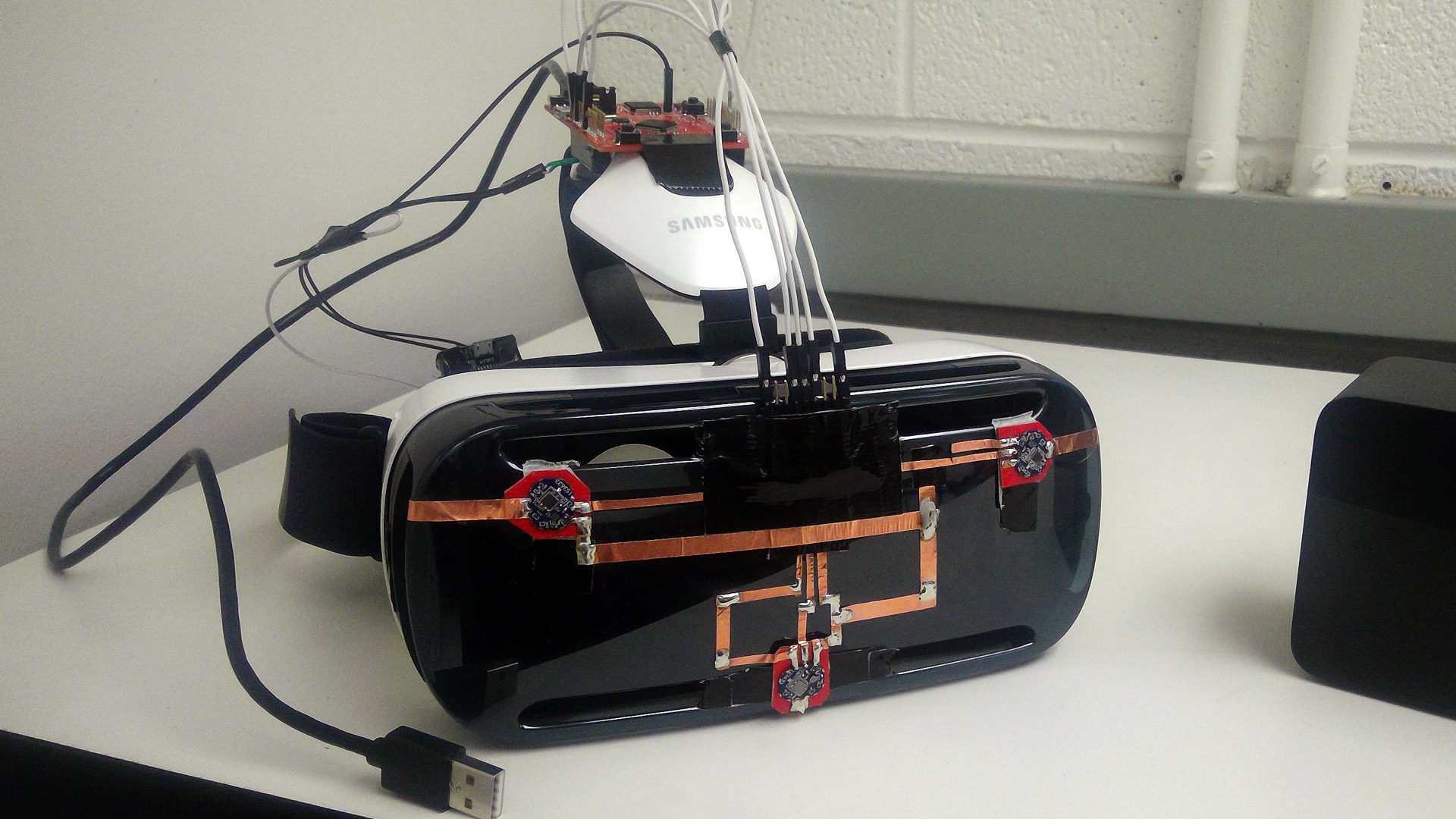In a reverse engineering exercise, two students at Utah State University have hacked positional tracking onto a Gear VR headset using SteamVR Tracking technology. Mobile VR solutions like Samsung’s Gear VR currently employ rotational tracking only.
The popular forms of mobile VR headsets, such as the Samsung Gear VR and Google Daydream View and Cardboard, are currently limited to rotational head tracking, meaning that you can look around comfortably from a single vantage point, but movements of the head through 3D space (like leaning forward or backward) cannot be tracking. Positional tracking adds not only comfort but also immersion to virtual reality, and is a feature of all major tethered VR headsets. However, achieving the same on mobile VR has proved challenging.
As a highly desirable feature for mobile VR headsets, positional tracking has been a priority for Oculus’ internal development for a long time, and various alternative solutions such as VicoVR and Univrses are beginning to appear. While the future points to self-contained, ‘inside-out’ tracking, already found on Microsoft’s Mixed Reality headsets and Google’s Tango technology, Utah State University students Brady Riddle and Sam Jungertat have created a positional tracking solution for Gear VR that uses Valve’s well-proven SteamVR Tracking system.

![]()
Since Valve opened SteamVR technology to third parties for free, it has become easier to create tracked peripherals and other hardware. While it would be possible to create a product that provided positional tracking for the Gear VR in this manner, the student project was used to learn the technology, in a reverse engineering exercise. A detailed breakdown of the project and its inner workings is available here.
Though this project was academic in nature, it does point to one potential solution for positional tracking on mobile VR headsets—a system which would use rotational tracking as a baseline, but then be able to add positional tracking via the SteamVR Tracking technology when at home and near base stations.

